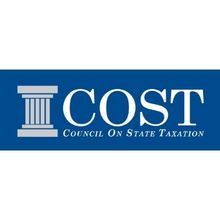Public Pensions
States Continue to Struggle to Reform Public PensionsIn June 2015, the New Jersey Supreme Court sided with Governor Christie (R) to overturn a lower court decision, ruling that the state is not required to make its full annual payment into its pension system as originally mandated by state pension reform enacted in 2011. While the decision was a major political win for the governor, Democrats have vowed to fully fund the state’s pension obligations per the requirements of the law, requiring legislators to find billions of dollars in funding. Earlier this week, three of the state’s largest pension funds – the Public Employees’ Retirement Fund, the Teachers’ Pension and Annuity Fund, and the Police and Firemen’s Retirement System – filed a lawsuit against the state seeking billions owed to the funds for the 2014, 2015, and 2016 fiscal years. New Jersey’s pension woes are not much different from other states’; around the country, unfunded pension liabilities are straining state and school district budgets as a greater share of funds are required to maintain the funds’ solvency. A 2014 Brookings Institution report studied pension reforms in Rhode Island and Utah, along with more limited reforms in Illinois and New Jersey, suggesting several recommendations for reformers. According to the Brookings report, the first and most crucial recommendation is that states should complete their actuarial pension obligations every year, preferably making it a legal or constitutional requirement. The report also suggests that it's necessary for reformers to gather and disseminate hard data regarding the status and health of the pension fund, which will allow reformers to effectively communicate with the public and educate them about why reforms are necessary. To this end, it is important to demonstrate the impact that pension problems will have on taxes and state spending priorities. The report recommend that states have a credible and visible reform champion who is able to communicate effectively and build a large coalition among all interested parties and that reformers should avoid making pension reform into an ideological issue, allowing the data to speak for itself without placing blame on unions. To this end, Brookings finds that reformers should seek to work alongside state and school workers, since the discussion around pension reform generally centers around the negative impact it will have on retirees. And finally, the report recommends that legal challenges to reforms should be anticipated, as evidenced in both Illinois and New Jersey. Average Pension of Retired State and Local Government WorkersChad Alderman at TeacherPensions.org has a map showing the average (statistical mean) annual pension benefit paid to state and local government employees. |

















